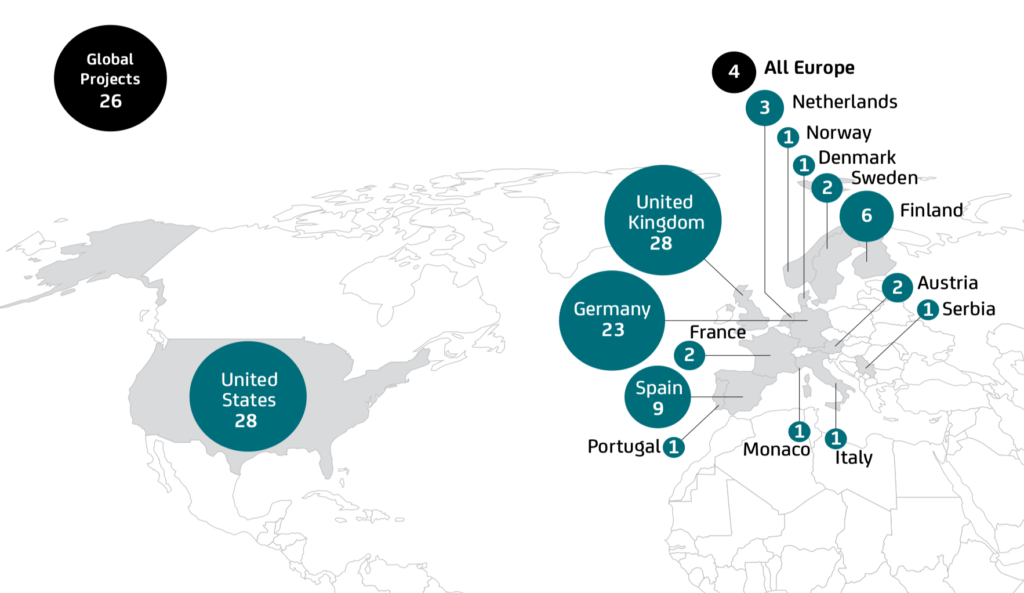
Automated Vehicles: Challenges to Full Scale Deployment
By Simmons Wavelength’s Head of Strategy and Policy, Sophia Adams Bhatti
Introduction
The automated vehicle (AV) market is predicted to grow from $54.2 billion in 2019 to $556.6 billion in 2026 [1]. The UK market alone is valued at £28bn by 2035. The benefits of autonomous transport systems reach far beyond shareholder value and GDP – there are huge benefits to be made in road safety and sustainability.
It’s a high stakes game in which nations and companies are vying for the top spot. However, achieving full scale deployment will not be easy. Here are just some of the challenges which will need to be overcome, before we can sit back and meditate whilst being seamlessly transported from home to work.
The Technology Gap
In the domain of AV there is a spectrum of autonomy – Level 0 – 5, in which the holy grail of level 5 is the state of full automation. Some of the technology deployed in the development of AVs is already on our roads, but despite the hype, the technology required for level 5 is still a way off. Although there has been lots of progress, higher level of reasoning for complex events in an urban environment remains difficult to resolve.
Infrastructure
Autonomous vehicles without the appropriate connected infrastructure are unlikely to achieve their full promise. Smart city connectivity plays a crucial in this.

The interrelationship with smart cities is likely to act as a brake on the full-scale deployment of AVs.
Although smart city projects are taking place globally, with investments projected to hit $135 billion (€119.32 billion) by 2021 [2], the pace of progress remains slow. Significant leadership and investment will continue to be needed, as will a drive to common protocols and communications standards. Cities are vying with fierce competition to be the leading global smart city, setting in motion a positive direction of travel for the longer-term optimisation of AVs.
Regulation
Enabling regulation and clarity is still required in most jurisdictions to enable safe and appropriate testing of AV technology, ideally with global consistency. Regulation plays an important role in safeguarding users, creating appropriate standards, establishing a level playing field and in engendering trust and confidence.
The nature of AV development poses a challenge for those creating the policy frameworks – both the technology and the responses are essentially experimental. Governments and regulators in a number of jurisdictions are seeking to create regulatory frameworks which support the development of the AV sector, however these responses are patchwork, and sometimes lacking consistency. Reconciling these will pose a challenge in the short to medium term.

Interface With Ethics
Autonomous vehicles will require the trust and confidence of governments and society to support broad and wide-spread adoption. Aligning development with acceptable values will play a vital role in the long-term success of the AV sector.
The broader debate about AI and the ethical standards which ought to underpin its use are directly relevant. Beyond the often cited ‘trolley test’, issues of AI quality, transparency, explainability, data privacy and governance are just a few of the ethics considerations which need to be addressed. Inherent in establishing the right approach is a series of trade-off’s between competing values and in this it is vital that the industry reaches across disciplinary lines, and engages with regulators and civil society to create a common understanding.
At both national and corporate level progress is being made in understanding these issues and seeking to establish a set of principles – building these individual exercises into a more common set of standards will be needed at some stage.
Corporate Governance
The final link in the chain is the role of corporate governance and the importance it plays in fast paced industries such as the AV sector. The success of the sector relies on responsible governance and business ethics. Sound technology development, adherence to regulatory requirements, and ethical and responsible deployment all hinge on the leadership and governance of an organisation.
However, the pace of emerging technologies and their broader impacts has left some boards and their organisations struggling or ill prepared. Success will necessitate having a degree of literacy which enables appropriate levels of oversight and informed decision making – across both technical and non-technical decision making.
Organisational culture and a sense of responsibility play an important role. Ultimately businesses make their own decisions, and can work consciously towards responsible development. The task of doing so will not be easy – complex supply chains, new and more intricate technologies, shareholder pressure and the court of public opinion all play into the mix.
Hardwiring principles into the fabric of the business, being clear on the company’s social purpose and establishing clear red lines will help boards to navigate this space more safely.
Conclusion
The autonomous vehicle sector holds great promise – both economic and social. Development and deployment need to reflect carefully on the risks and impacts – balancing technological capability with fundamental principles.
On the road towards realising the positive potential of AVs there are a number of obstacles to overcome, yet with consideration, coordination and the appropriate investment and frameworks most are solvable. The timeline is unclear as to when widespread adoption of AVs will be a reality, but many would still argue that it is a matter of when, not if.
This is an educational guest post by Simmons Wavelength.
—
References:
- Autonomous Vehicle Market Outlook – 2026 – https://www.alliedmarketresearch.com/autonomous-vehicle-market
- Smart cities: Turning the dream into a reality, Research by ATG Access, November 2018